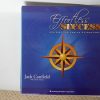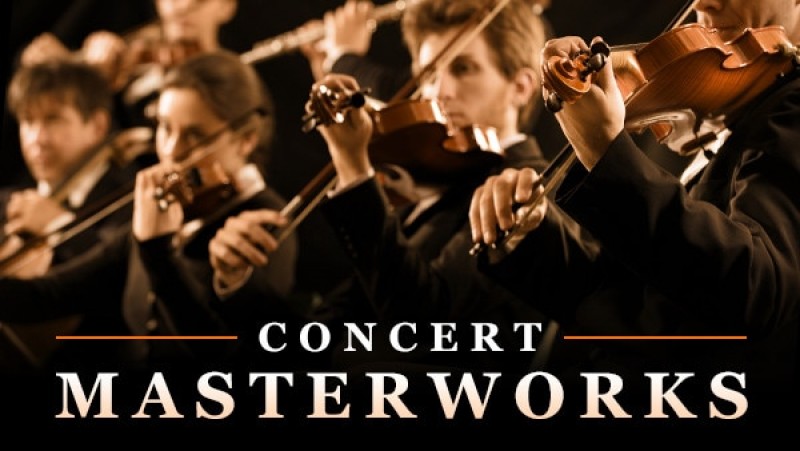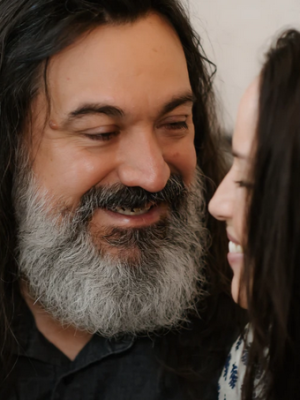TTC Video – Concert Masterworks
$440.00 Original price was: $440.00.$58.90Current price is: $58.90.
The profound sense of caution ingrained in Brahms by his solid middle-class background, and how this influenced his choices of what to publish. File size: 5.18 GB
TTC Video – Concert Masterworks
Have you ever wondered what goes through a composer’s mind during those magical weeks and months when a musical composition—something meant to become a listening experience—is being notated on paper? Have you tried to imagine the creative process that boils inside geniuses like Mozart, Beethoven, Dvorák, Strauss, Brahms, Mendelssohn, or Liszt? Or within any composer?
Hide Full Description
Is it pure inspiration?
Does a composer hear the music first, before even picking up a pen?
Or does the music, in fact, actually begin on that blank sheet of staff paper?
Most important, can lay listeners like us, untrained in the technicalities of music, be taught to open our ears to a composer’s creative intentions?
Learn the Art of Listening to Great Music
Can we learn the art of listening, so that great music becomes an even more insightful and pleasurable experience for us?
Dr. Robert Greenberg believes the answer to that last question is “yes.”
And now this winner of three Nicola De Lorenzo Prizes in composition, whose music courses in several classical genres are among our most popular, has set out to prove his point once again.
He has created a course designed to give you a new level of sophistication as a music listener—using as his teaching tools some of the most memorable works in all of music.
Gain a New Level of Listening Sophistication
The skills you learn in this course will attune you to intricacies of musical purpose, structure, and narrative content that you will be able to perceive in any piece of music.
Though this is a demanding course, with a deeper look into musical structure than untrained listeners are likely to have experienced, it is not an intimidating one.
Professor Greenberg vividly positions each composition and its composer in the social and musical fabric of its time, so you can understand the music in its proper societal and artistic context.
His descriptions are vivid, evoking dramatic images of:
The precocities of young Mozart
Beethoven’s progress toward his “Heroic” style, as his inner tendencies exaggerated by the turbulent times he lived in
The profound sense of caution ingrained in Brahms by his solid middle-class background, and how this influenced his choices of what to publish.
Throughout these lectures, Professor Greenberg includes fascinating details of the musical world in which each composer worked.
Get immediately download TTC Video – Concert Masterworks
Learn Beethoven’s Advantage over His Predecessors
You learn, for example:
How the piano developed, and how design advances gave Beethoven a profound advantage over his harpsichord-trained predecessors
how the 19th-century cult of the individual artist as hero led to the rise of virtuoso superstars such as the legendary Italian violin virtuoso Niccolo Paganini, who revolutionized the art of violin playing and inspired Liszt to become a piano virtuoso second to none
how the folk elements used by nationalist composers became part of the shared, common language of concert music, so Dvorák could feel perfectly comfortable using “American” elements in his Symphony no. 9, the New World Symphony, examined in this course.
The core of the course is its superb structural examination of eight of the most brilliant pieces of music ever written, with Professor Greenberg grouping the composers and their compositions into four pairs, each designed to clarify different aspects of music for you.
Part I: The Classical Piano Concerto features:
Mozart—Piano Concerto no. 25 in C Major, K. 503 (1786)
Beethoven—Piano Concerto no. 5 in E-flat Major, op. 73, the Emperor Concerto (1809).
The emphasis of these lectures is on the musical substance of the concerti themselves—their formal structure, thematic relationships, expressive content, and the role of the piano soloist.
Part II: Nationalism and Expressionism in the Late 19th Century features:
Antonín Dvorák—Symphony no. 9 in E Minor, op. 95, the New World Symphony(1893)
Richard Strauss—Death and Transfiguration (1889).
Here Professor Greenberg focuses on Dvorák’s structural use of conflicting keys to reflect conflicting themes, and on Strauss’s tone poem as an example of a “through-composed piece,” in which the motives and themes grow out of material that has preceded them.
Part III: Great 19th-Century Violin Concerti features:
Beethoven—Violin Concerto in D Major, op. 61 (1806)
Brahms—Violin Concerto in D Major, op. 77 (1878).
In comparing these two works—the “backbone of the 19th-century violin concerto repertoire”—Professor Greenberg shows how the work of Beethoven, trained in the structures and techniques of 18th-century Classicism, and Brahms, the 19th-century Romantic, so clearly reflect characteristics of the other.
Part IV: Early Romantic-Era Program Music features:
Felix Mendelssohn—Incidental Music, op. 61 (1842) and Overture to A Midsummer Night’s Dream, op. 21 (1826)
Franz Liszt—Totentanz (1849).
Here, Professor Greenberg compares Mendelssohn’s brilliant and endearing interpretation of Shakespeare’s comedy with Liszt’s virtuosic example of the Romantic era’s fascination with the Gothic and the macabre in his work based on the 14th-century Black Death.
Experience Deep Structural Understanding
Get immediately download TTC Video – Concert Masterworks
Studying musical composition in this way is an opportunity to penetrate more deeply into the structure of a piece than you’ve ever done before.
Professor Greenberg likens the experience to understanding great works of architecture. We can see their surfaces and even be moved by their beauty, but unless we are taught to see and comprehend them in our minds, our eyes will be blind to their richest glories:
Their construction
Their ingenious blending of purpose and technique
Their philosophical force.
Learn to perceive most of the aesthetic, structural, expressive, and narrative information a composer builds into a piece of music, dramatically changing your listening experience.
The result? The music you listen to becomes more vivid, life enhancing, exciting, visceral, and altogether compelling.
See New Ways to Plumb Music’s Depths
These lectures give you the tools of vocabulary and the structural fundamentals most of us, no matter how much we love music, have never acquired—even if you’ve taken “music appreciation” or learned to play an instrument at a basic level.
Even more important, you gain a knowledge of the structural conventions original audiences took for granted, allowing you to share the musical experiences those audiences had when they were surprised or challenged by a composer’s departure from those conventions.
To ensure you get the most from the lectures, the explorations of each of the masterpieces analyzed are made up of three components:
Background: the life, times, personality, and musical stylistic assumptions of the composer under study
An extensive examination of the work under study, analyzing its form, themes, thematic relationships, expressive content, and more
The WordScore Guide—a unique visual device that allows you to follow the musical narrative as it unfolds before you, even if you can’t read a note of music.
With the tools provided by this course, you can understand a composer’s surrender to the status quo … or his defiance of it. And you’ll be able to experience, as those first audiences did, the music’s full intellectual and expressive impact.
Be the first to review “TTC Video – Concert Masterworks” Cancel reply
Related products
Other Courses
Other Courses
Other Courses
Other Courses













Reviews
There are no reviews yet.